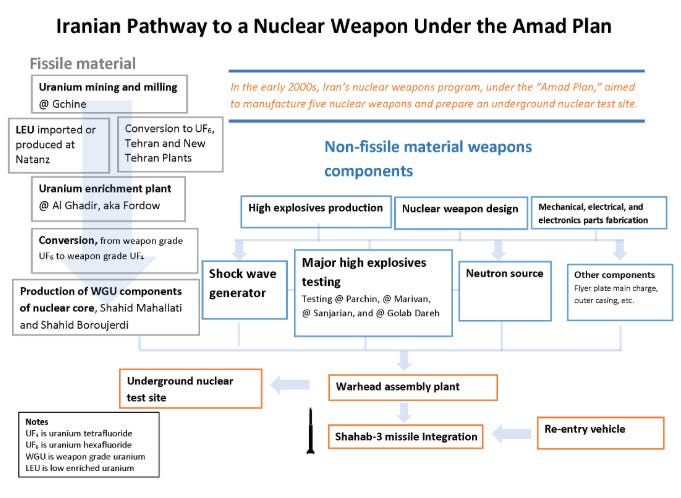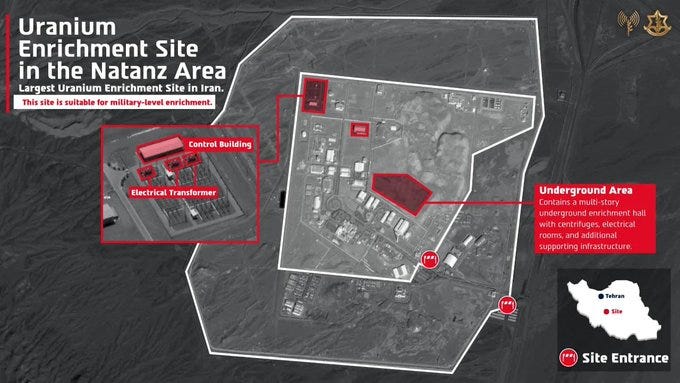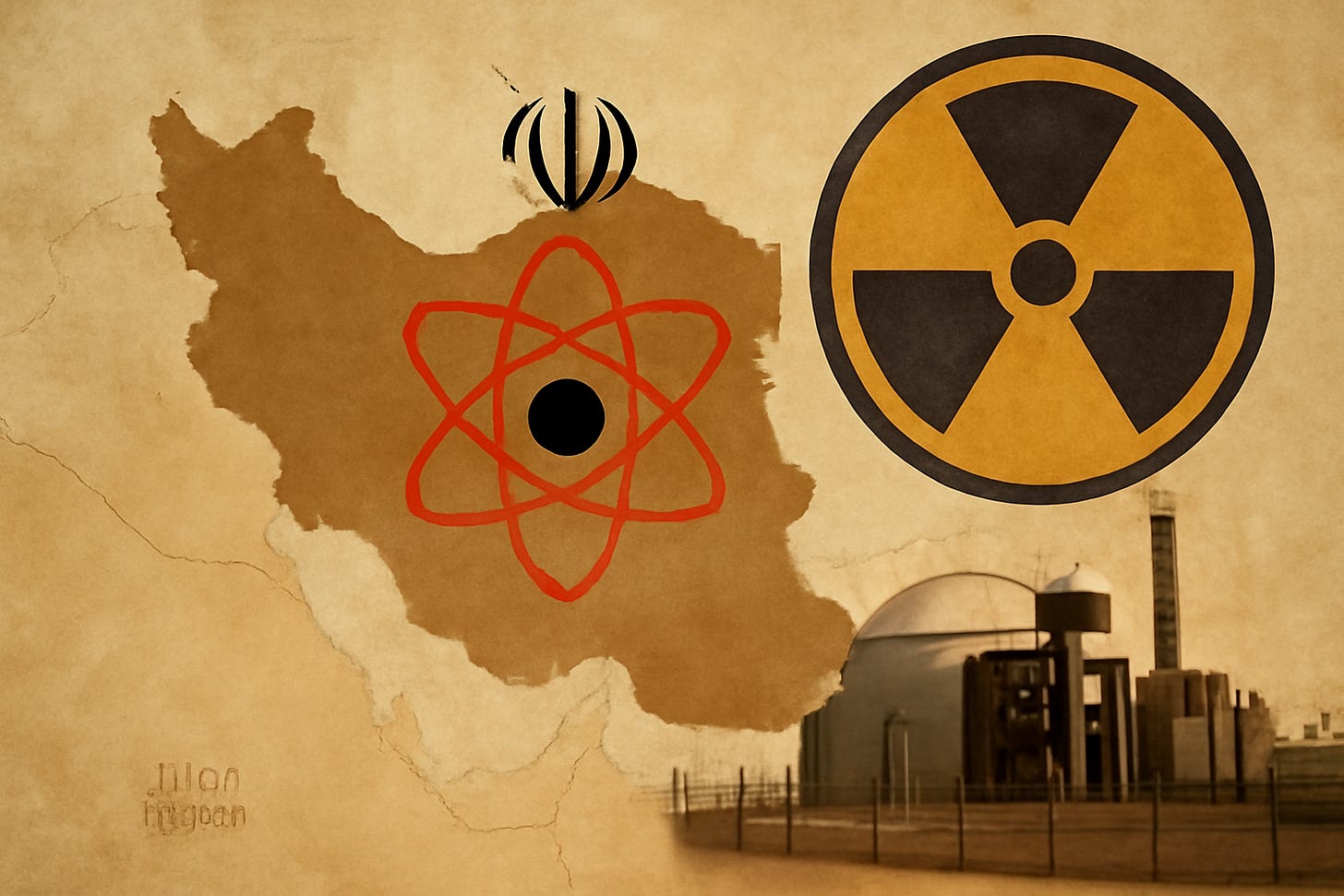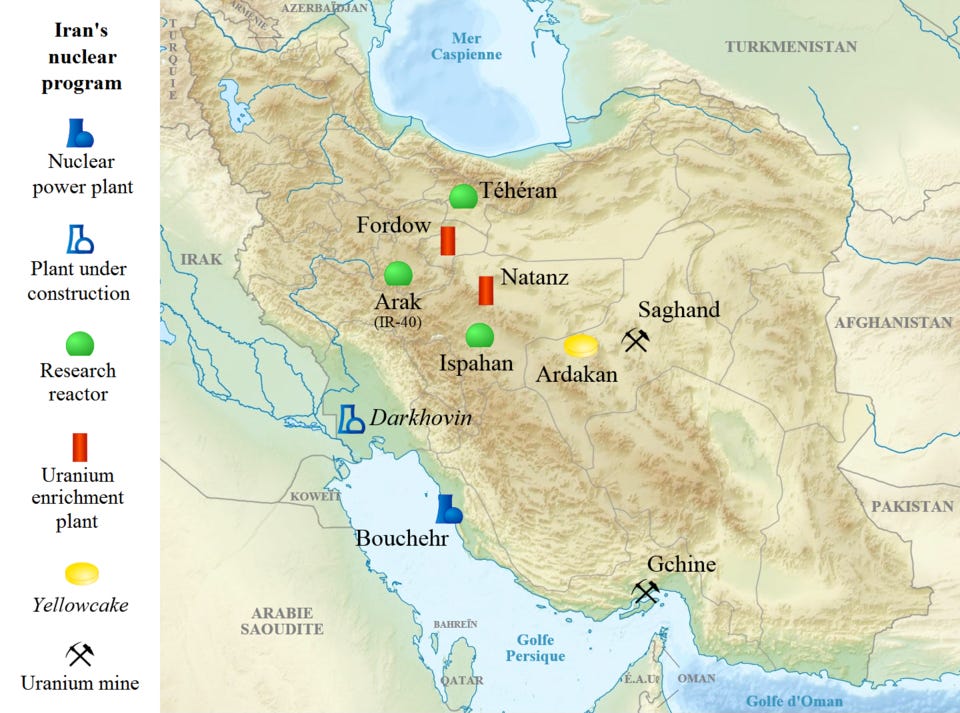Iran's Nuclear Deception: A Timeline of the Lies
For more than two decades, Iran has insisted that its nuclear program is intended for "peaceful purposes," yet history reveals a pattern of repeated deception toward the international community.
In what Israel has named "Operation Rising Lion," Israel and the Islamic Republic of Iran are at war over the latter’s nuclear weapons ambitions. Simultaneously, the global nuclear watchdog, the International Atomic Energy Agency (IAEA), has formally declared Iran in breach of its non-proliferation obligations for the first time in 20 years. For over two decades, Iran has claimed its nuclear program is for "peaceful purposes," while history shows it has repeatedly deceived the international community. This investigative report exposes the most egregious instances of Iranian nuclear deception since its inception.
The Original Sin: Secret Facilities Exposed (2002)
Iran's nuclear deception first became evident on August 14, 2002, when the National Council of Resistance of Iran publicly revealed the existence of two massive secret nuclear facilities at Natanz and Arak. These sites had been constructed in complete secrecy and remained hidden from international inspectors for years. Iran maintained that these facilities were intended for peaceful purposes; however, their clandestine nature and advanced uranium enrichment capabilities indicated otherwise. This revelation shocked the international community and prompted the most intensive nuclear inspections in IAEA history.

The Amad Plan: Iran's Secret Nuclear Weapons Program (1999-2004)
One of the Islamic Republic’s most notable deceptions concerns the Amad Plan- a nuclear weapons program initiated in 1999 with the objective of producing five weapons by early 2004. Led by Mohsen Fakhrizadeh, this secret military program operated in parallel with Iran's civilian nuclear activities, while Tehran consistently denied any military dimensions to the IAEA. The Amad Plan included the construction of the secret, deep underground enrichment facility at Fordow. When confronted with evidence, Iran dismissed the allegations as "baseless and fabricated."
Hassan Rouhani's Admission of Deception (2006)
In a rare acknowledgment, Hassan Rouhani, Iran's former chief nuclear negotiator and later the regime’s president, admitted that Iran had deliberately deceived the West during nuclear talks. Speaking to Islamic clerics in 2006, Rouhani revealed that while negotiations were ongoing, Iran secretly completed the installation of uranium conversion equipment at its Isfahan plant. He stated that Iran "played for time and tried to dupe the West" regarding the program, even during negotiations. This admission confirmed suspicions that Iran used diplomacy as a smokescreen while advancing its nuclear capabilities.
The Fordow Underground Facility Cover-Up (2009)
Iran's pattern of concealment continued with the Fordow underground enrichment facility, constructed secretly inside a mountain near the city of Qom. Iran only disclosed this facility to the IAEA in September 2009, after Western intelligence services had already discovered it. Iran claimed that Fordow would only be used to enrich uranium-235 to 5% for nuclear power. However, in 2023, the IAEA reported the discovery of uranium particles enriched to 83.7%. The facility's underground location and military-grade construction made clear it was designed for clandestine weapons-related activities.
The Mossad Archive: Proof of Iran's Nuclear Weapons Program (2018)
In January 2018, Mossad agents infiltrated a secret warehouse in Tehran and seized Iran's entire nuclear archive—100,000 documents that provided definitive proof of Iran's nuclear weapons ambitions. The archive contained blueprints for nuclear weapons, evidence of weapons-grade uranium production plans, and documentation of facilities that had never been declared to the IAEA. Most notably, the documents revealed that Iran had stolen IAEA confidential records to craft more credible cover stories for its deception. This unprecedented intelligence operation exposed decades of systematic lying to international inspectors, undertaken to further the weaponization of uranium-235.
Violating the Nuclear Deal While Claiming Compliance (2019-2021)
Even after signing the 2015 nuclear agreement, Iran continued its deceptive practices. Beginning in 2019, Iran systematically violated every major provision of the deal while asserting that its actions were "reversible." Iran exceeded uranium stockpile limits by twelve-fold, enriched uranium well beyond permitted levels, and installed advanced centrifuges in direct violation of the agreement. By 2020, the IAEA reported that Iran possessed over twelve times the permitted amount of enriched uranium. Each violation was accompanied by Iranian claims that its nuclear program remained "entirely peaceful."

Near-Weapons Grade Uranium (2025)
Today, Iran's deception has reached unprecedented levels. The IAEA found Iran in non-compliance with its nuclear obligations for the first time in twenty years, citing unexplained uranium particles at undeclared sites and obstruction of inspectors. According to the IAEA, Iran now possesses over 400 kilograms of uranium enriched to 60%- just steps from weapons-grade material. Despite having enough material for several nuclear bombs, Iranian officials continue to assert that their program is peaceful, even though Iran is the only non-nuclear country to possess such materials. Intelligence estimates indicate that Iran could produce enough weapons-grade uranium for one bomb within a week.
Operation Rising Lion
Israel’s launch of Operation Rising Lion, which has targeted Iran’s nuclear facilities at Natanz, Isfahan, and Fordow, has significantly altered the dynamics of the conflict. With Iran now holding enough enriched uranium for multiple nuclear weapons and the ability to weaponize within days, the prospects for a diplomatic resolution are increasingly unclear. Given Iran’s track record of evasion, whether diplomacy can still succeed remains an open question.




